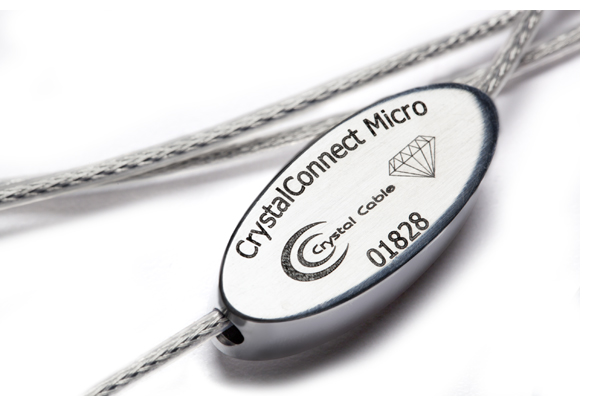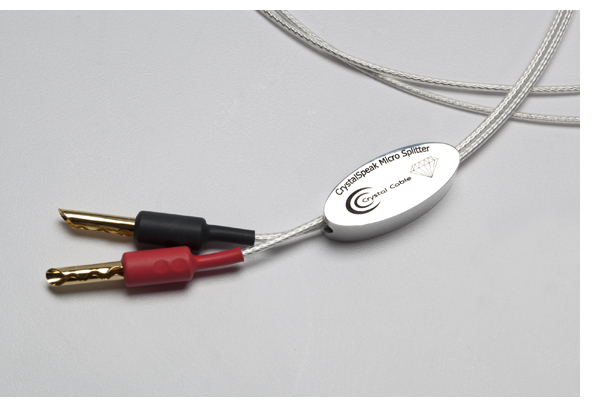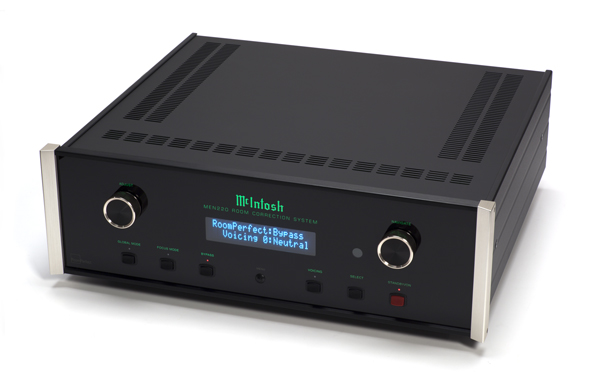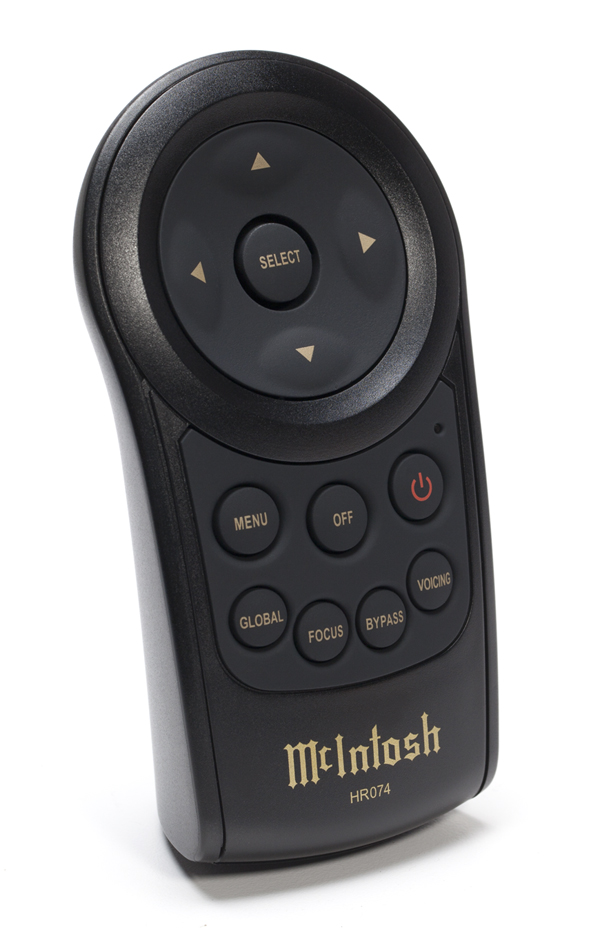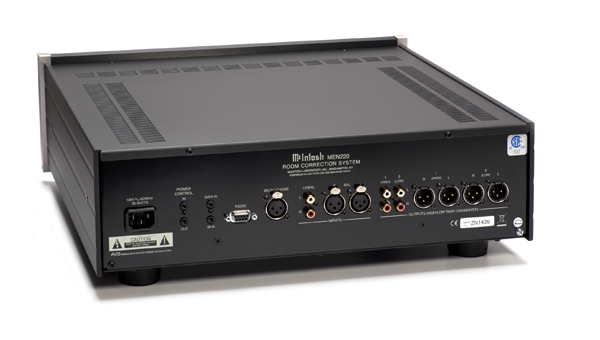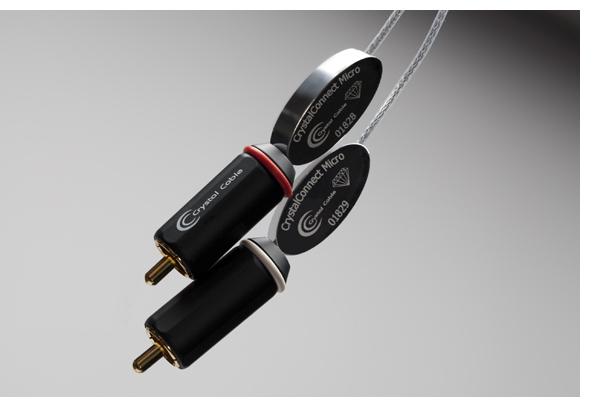 The biggest issue audiophiles likely face concerns what to do with all the huge and unsightly cables connecting components together. Of course, a faction of audiophilia considers big, beefy cable muy grande macho. However, not everyone wants a massive cable loom lurking in a listening room, which often doubles as a living room.
The biggest issue audiophiles likely face concerns what to do with all the huge and unsightly cables connecting components together. Of course, a faction of audiophilia considers big, beefy cable muy grande macho. However, not everyone wants a massive cable loom lurking in a listening room, which often doubles as a living room.
Attending lectures from various cable manufacturers isn’t much help. Most firms tend to justify their approach. Companies producing large cables try to convince you that a small diameter cable can’t possibly work. Whatever. Physics aside, after spending a lot of time with the Micro Diamond interconnects and speaker cables plugged into a wide range of components and speakers, they not only work brilliantly, they are beautifully executed.
And yes, these actually are cables you’d want your friends to see. Packaged like fine jewelry, they arrive in velvet pouches and inside black boxes—elegantly understated and nicely done without costing a fortune. A one-meter pair of interconnects (RCA or XLR) retails for $850, and is also available as a turntable cable with appropriate termination for $1,000. A 2.5-meter speaker cable set costs $2,950 in bananas or spades.
Crystal Cable director Gaby van der Kley works with the man behind Siltech cables and spent years touring the world as a concert pianist. She’s definitely a designer that knows what instruments sound like.
Most audio cables on today’s market utilize copper or silver conductors, and some are primarily one material with a coating of the other on top. Crystal Cable takes a disparate path, using gold along with a silver primary conductor. Yet the gold isn’t for coating. Rather, it’s almost impregnated in the silver to fill in molecular gaps in the 1.7mm conductor.
If I had a $20 bill for every talk I’ve heard on cable size, geometry, and the like, I could probably retire. Those subscribing to the “bigger is better” school of thought claim a svelte cable can’t deliver powerful bass response. But Micro Diamond cables are not bass deficient.
Beyond terrific audio performance, Micro Diamond speaker cables offer an interesting feature: scalability. Crystal Cable calls the ends “splitters,” and they can be purchased with a number of different termination options: standard spades or bananas, Furutech carbon spades, or bananas and bi-wired. You can also add another length of cable should you need to reroute your system down the road. Considering the low prices fetched by used cable, this strategy is an excellent way to future-proof your cable purchase and retain your investment.
The toughest part of any cable evaluation is trying to determine the sound of the cable. In a perfect world, a cable would add no sonic signature to the signal passing through it. Predictably, some industry folk would have you think all wire sounds the same. However, we believe cable makes a difference in the overall sound of a system and should do no harm to the signal.
While many listeners use cable as the last step in fine-tuning a system—employing cables as tone controls—we view high-quality cable as the way to transfer as much of your system’s performance from one component to another, and finally, to your loudspeakers. More than gross tonal changes, the main difference heard between second- and first-rate cable deals with reducing grain and increasing low-level detail retrieval, not unlike the qualities provided by an excellent power conditioner.
Auditioning Micro Diamond cables in three different systems—small, medium and super-size—achieved good results. The compact setup comprised a vintage CJ amp and preamp, Schiit Bifrost DAC, and pair of MartinLogan Aerius i speakers cabled with various odds and ends. The medium system consisted of a Simaudio 600i integrated amplifier, Wadia 121 DAC, and pair of Harbeth Compact 7-IIIES speakers. The final stereo array (publisher Jeff Dorgay’s standard reference system) involved Audio Research REF components, a dCS Paganini stack, and GamuT S9 speakers cabled with a mixture of Shunyata Aurora, Cardas Clear, and AudioQuest Sky cables.
A majority of acoustic recordings— selections heavy on piano, drums, and acoustic guitars—were played to quickly establish the cable’s proprietary sonics. The latter are highly revealing, with an upfront presentation akin to listening to studio monitors in a near-field configuration. Given Ms. van der Kley’s background, it comes as no surprise that piano reproduction via her cables feels sublime. Whether listening to Herbie Hancock or Beethoven, the instrument’s complex attack and subtle overtones are always maintained and never become harsh or blurred.
If any of your components possess a tonal balance anywhere between neutral and warm/romantic/euphonic, you will be amazed at the additional detail the Micro Diamonds bring to your system’s overall appeal. When utilized with the B&W 802 Diamonds, already a highly resolving speaker with the diamond tweeter and most solid state amplifiers is a presentation that is too forward for some. Still, TONEAudio counts a detail fanatic in its ranks that can never get enough resolution. He loved this combination.
The Micro Diamonds make the biggest improvement in an all-tube system, especially one that leans more towards warm tonality. With the Conrad Johnson PV-12 (recently rebuilt by CJ with CJD Teflon capacitors) and either the MV-50 (same treatment) or PrimaLuna Dialogue monoblocks, the Diamonds’ ability to transfer every bit of information adds a spectacular level of inner detail to this system without compromising musicality in any way.
A similar result can be achieved via speakers ever so slightly on the warm side of neutral. Vide, Harbeth Compact 7s really come alive with Crystal Cables. The sound in our test speakers from Focal, Verity, GamuT, and Peak Consult (all fairly neutral) now boast a different disposition. There’s more resolution, and it’s musically satisfying. What more can one ask?
The Crystal Cable Micro Diamond Cables
MSRP: Interconnect, 1m – $850, Speaker, 2.5m – $2,950
www.crystalcable.com
www.audioplusservices.com (US/Canada Importer)



